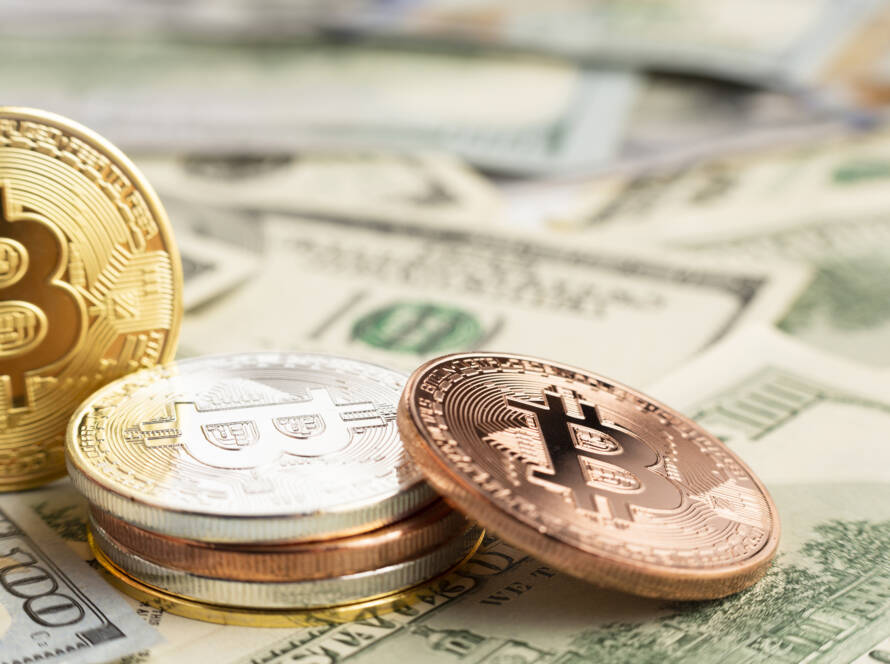Is the anonymity enabled by the use of cryptocurrencies compatible with regulatory compliance requirements? In theory, no, because anonymous financial transactions open the door to money laundering and terrorist financing operations. Legislation is moving in the right direction, but the use of software solutions remains essential to monitor, detect and eradicate suspicious transactions.
ANONYMITY, THE CORNERSTONE OF BLOCKCHAIN AND CRYPTOASSETS
Cryptocurrencies and anonymity are two terms often associated because they are based on Blockchain technology and encryption protocols. Anonymity is facilitated by three main features of Blockchain and cryptocurrencies:
Using pseudonyms instead of real identities
Unlike traditional banking systems, where transactions are associated with named accounts, cryptocurrencies use public addresses (strings of alphanumeric characters) to identify users. Thus, a transaction is recorded on the Blockchain under a pseudonymous address, and not under the user's real name.
No centralized intermediaries
In the traditional banking system, transactions pass through financial institutions that register and verify users' identities. With cryptocurrencies, transactions are carried out directly between peers (peer-to-peer), without the need for a trusted third party imposing identification.
Transparency with no direct link to identity
All cryptocurrency transactions are recorded on a public Blockchain. This means that anyone can see the flow of money between different addresses, but not necessarily be able to identify who is hiding behind a given address.
ANONYMITY AND COMPLIANCE: AN INEVITABLE COLLISION!
When it comes to cryptocurrencies, anonymity is a reality. Alas, this principle is also taken advantage of by those who practice money laundering and finance terrorism. According to a Senate report published in 2022, "cryptoactives, thanks to theBlockchain, pursue a simple objective: to make possible exchanges that are encoded, anonymous, secure, transparent to users and, above all, opaque to the authorities. The perfect absence of regulation by a central authority allows users to completely escape government supervision."
Let's make it clear that, despite their name, cryptocurrencies are not currencies. According to the Ministry of Finance, " cryptocurrencies are not recognized as financial instruments [...], they are not currently regulated." This is because they do not meet three conditions that define a currency, even if the situation is evolving: serving as an instrument of exchange (for buying and selling), being a unit of account (for comparing prices) and not being stores of value. Legally speaking, a cryptoasset is not a currency because it "does not depend on any institution, has no legal tender status, which makes it difficult to assess its value, and cannot be saved, and therefore constitute a store of value ", says the Ministry of Finance.
REGULATORY PRESSURE TO LIMIT ANONYMITY
It is for this reason that legislators intend to limit this advantage. In early 2025, the French Senate passed a bill prohibiting the anonymization of cryptocurrency transactions, with new restrictions for PSANs (digital asset service providers) and individual users. At European level, the MiCA (Markets in Crypto Assets) regulation, enacted by the European Parliament in April 2023, was transposed into French law in October 2024 and has been applicable since January 2025. This text specifies that to protect the EU's financial system against money laundering and terrorist financing, cryptoasset service providers must step up controls on transactions involving high-risk third countries, whose countermeasures are insufficient.
In the Senate, an amendment was tabled on January 20, 2025, to ban the use of cryptoasset "mixers", which aim to opacify and make untraceable the origin of cryptoassets circulating on theblockchain."Given their characteristics, these mixers are indeed increasingly used in money laundering circuits, particularly with regard to income from drug trafficking," the text states. The risk of cryptoactives being used to finance criminal activities is deemed very high by the Comité d'orientation de la lutte contre le blanchiment et le financement du terrorisme(COLB).
THE END OF ANONYMITY? NOT YET...
The evolution of legislation to limit the perverse effects of cryptocurrencies, in particular anonymity, is helping to mitigate the imbalance between money laundering and terrorist financing risks on the one hand, and compliance requirements on the other. But is this enough? For four main reasons:
A delicious imagination without limits
As in all areas of crime, especially financial crime, the imagination of fraudsters is virtually limitless: as soon as new barriers are erected, they are often circumvented in the short or long term.
Increasingly colossal financial stakes
The financial stakes are already significant and rising steadily: the Banque de France points out that the capitalization of cryptoassets has reached $2.1 billion (at the end of October 2024), twice as much as in 2023 and almost 120 times more than in 2017, according to the Cour des Comptes. Enough to attract the instigators of illicit activities like bees to a honeypot.
The long road from law to implementation
The good will of the authors of regulatory texts does not always translate into a sustained rate of implementation in the field, nor into lasting motivation on the part of service providers (PSANs). This can be seen, for example, in the varying delays in transposing European directives into national law.
International business facilitates opacity and impunity
The international context continues to favor opaque structures, making it difficult to combat money laundering and the financing of terrorism, and in particular to apply dissuasive sanctions.
AUTOMATE TO MONITOR, DETECT AND ENSURE COMPLIANCE
Beyond regulations, the effectiveness of the fight against money laundering and the financing of terrorism relies on the robustness of compliance within companies. So, is it possible for the anonymity of cryptocurrencies to coexist with compliance requirements? In reality, it is, but on one condition: the automation of detection processes, as well as the analysis of customer data and their financial transactions (thanks in part to the advantages of augmented artificial intelligence), in real time.
While it remains difficult to prevent fraud attempts, it is possible to tackle the consequences (by stopping them as early as possible) and control the circuits of financial flows. In this area, software solutions are lethal weapons for ensuring regulatory compliance!
Find out more:



